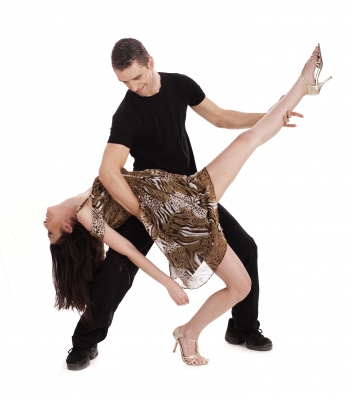
For many people, ballroom dancing brings up images of a time from the past; when every gentleman had a tuxedo in the wardrobe and every lady knew how to waltz. These days, ballroom dancing can bring some of those feelings of graciousness and good manners back to life, but let’s not think it’s an activity trapped in the past. Some of the etiquettes on the dance floor are timeless, while others have changed. After all, you can always rent a tuxedo if need be and both ladies and gentlemen can learn to waltz by signing up for classes at your local Fred Astaire Dance Studio.
General good manners apply! “Please” and “Thank You” are the golden rule, but so are good eye contact and a smile. In social dancing, a man can ask a woman to dance, but so can the ladies. In either case, if you say yes, offer your hand and let your partner escort you to the floor. A note about saying “No, thank you.” In social and group dance situations, it is considered good form to say yes to most people who ask — the variety of partners will only help you both improve. If you have a reason you would rather decline, a smile, along with a simple “No thank you. Perhaps later,” is appropriate. A potential partner’s poor dance technique is not generally considered a good reason to decline a dance.
Good times and good etiquette on the floor. Once on the dance floor, it’s up to the follower to determine body distance. A leader should never pull a lady closer than she is comfortable being. Dances generally move counter-clockwise on the floor with the far outer lanes reserved for faster dancers. Newer dancers generally stay to the middle and center lanes. If you have an accident, don’t fret. If you accidentally bump into another couple, simply smile and apologize then continue dancing. Do the same if you accidentally trod upon your partner’s foot. It doesn’t matter who’s at fault. A quick apology with a smile is best.
One of the fun things about social dancing is meeting a variety of new people. That means you’re going to find yourself dancing with partners with skill levels ranging from beginner to expert. No matter what your partner’s skill level, it is not good form to advise, critique, or “fix” them unless asked. The only time it is appropriate to mention your concern is if they are causing you physical pain. For example; if your partner is holding your arm at an angle that is painful for you or squeezing your hand too tightly then by all means stop, smile, and say, “I’m sorry, but that angle is causing my arm to hurt. Could we try it again?”
When the dance is over, most people will applaud their partner and the other dancers. You should not stand in the dance floor and have a conversation. After all, another dance is about to begin! The male will escort the female back to her seat no matter who did the asking. This return of courtly manners is one of the greatest appeals of ballroom dancing.
A few extras for good measure. Make sure you understand the dress code. You don’t want to show up in a pair of jeans when everyone else has on suits or dresses. Comfortable shoes are a must! The whole idea is to dance and you don’t want to dread every time someone walks over and asks you to be their partner. Keeping breath mints at hand is a great idea as you’ll be in close quarters with people for most of the evening.
Remember that ballroom dancing should be FUN! At Fred Astaire Dance Studio, we work with students of all ages and abilities. Whether it’s group or private lessons, Fred Astaire’s teaching method will result in faster learning rates and higher levels of achievement. From Practice Parties to Guest Parties to Showcases, you’ll have opportunities to hone your skills and shine in the spotlight. Get started today by contacting a Fred Astaire Dance Studios location near you.

